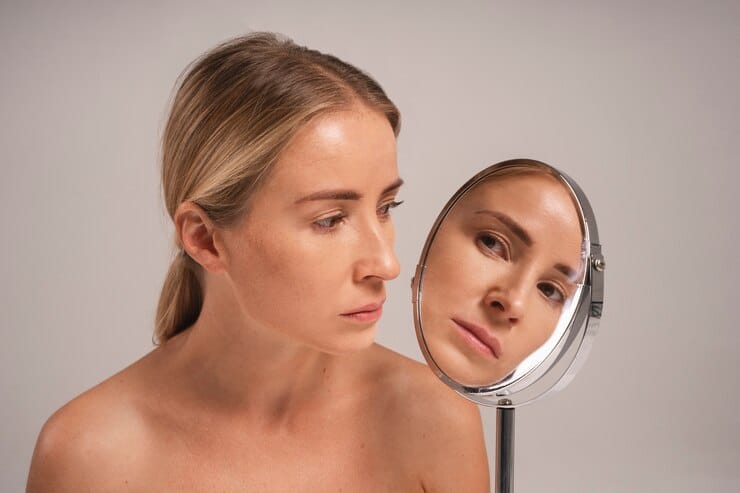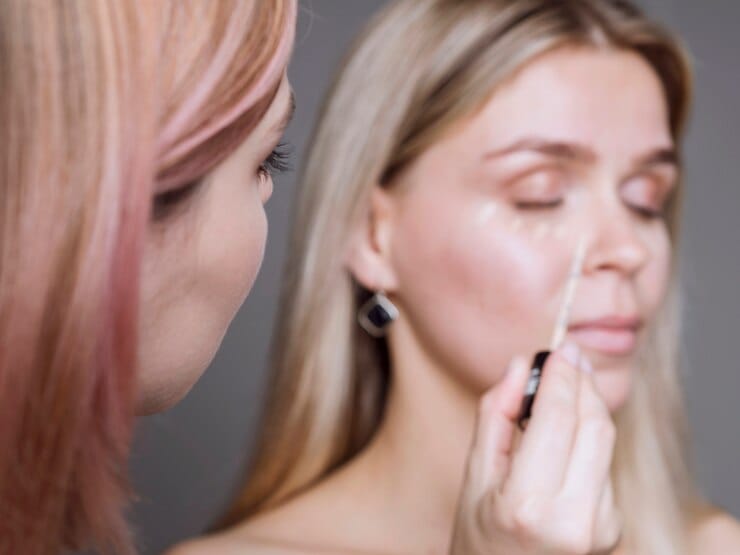Do you ever feel like your face is on a constant roller coaster ride between shiny and dry? You’re not alone. Understanding whether you have oily or combination skin is crucial to crafting the perfect skincare routine. In this article, we’ll dive deep into the nuances of these two skin types, helping you identify your skin type and how to best care for it.
What is oily skin?
Oily skin is characterized by an overproduction of sebum, the natural oil produced by your sebaceous glands. This can leave your skin looking shiny, especially in the T-zone (forehead, nose, and chin). People with oily skin might also notice enlarged pores and frequent breakouts.
What is combination skin?
Combination skin is a mix of both oily and dry areas. Typically, the T-zone is oily, while the cheeks and other areas might be dry or normal. This dual nature requires a balanced approach to skincare, targeting different areas with different needs.
Causes of Oily Skin

Genetic Factors
If your parents had oily skin, chances are you might too. Genetics play a significant role in determining your skin type.
Environmental Influences
Living in a hot and humid climate can exacerbate oily skin. The heat increases sebum production, making your skin appear even oilier.
Lifestyle Choices
Diet, stress levels, and even the skincare products you use can impact oil production. Foods high in sugar and dairy can trigger excess sebum, while stress can cause hormonal fluctuations that affect your skin.
Causes of Combination Skin

Genetic Factors
Combination skin can also be hereditary. If your family members have varying skin types, you might inherit a mix of them.
Environmental Influences
Seasonal changes can impact combination skin. For example, your skin might be oilier in the summer and drier in the winter.
Lifestyle Choices
Using the wrong skincare products can strip your skin of natural oils in some areas while leaving other areas overly moisturized.
Symptoms of Oily Skin

Common Signs to Look For
- Shiny appearance, especially in the T-zone
- Enlarged pores
- Frequent acne or blackheads
How It Feels and Appears
Oily skin often feels greasy and can look shiny throughout the day, requiring frequent touch-ups or blotting.
Symptoms of Combination Skin

Common Signs to Look For
- Oily T-zone
- Dry or normal cheeks
- Occasional breakouts
How It Feels and Appears
Combination skin can feel confusing: oily in some spots and dry in others. It often requires a more nuanced skincare routine to balance the different areas.
How to Determine Your Skin Type

Simple tests you can do at home
One of the easiest ways to determine your skin type is the blotting sheet test. Press a clean blotting sheet on different areas of your face. If it picks up oil from all areas, you have oily skin. If it only picks up oil from your T-zone, you have combination skin.
Consulting a dermatologist
If you’re still unsure, a dermatologist can provide a professional analysis and recommend products tailored to your skin type.
Skin Care Routine for Oily Skin

Cleansing
Choose a gentle, foaming cleanser that removes excess oil without stripping your skin of moisture.
Toning
A toner with salicylic acid can help to clear out pores and reduce shine.
Moisturizing
Opt for an oil-free, non-comedogenic moisturizer to keep your skin hydrated without clogging pores.
Recommended Products
- Foaming cleansers with salicylic acid
- Alcohol-free toners
- Oil-free moisturizers
Skincare Routine for Combination Skin

Cleansing
Use a gentle cleanser that balances oil without drying out the skin.
Toning
A hydrating toner can help to even out the skin’s moisture levels.
Moisturizing
You may need a lightweight moisturizer for the T-zone and a richer cream for dry areas.
Recommended Products
- Balanced cleansers
- Hydrating toners
- Dual-purpose moisturizers
Common Mistakes in Skincare
For oily skin
- Over-washing can strip the skin of natural oils, causing it to produce even more oil.
- Using harsh products can irritate the skin and exacerbate oiliness.
For Combination Skin
- Treating all areas of the face the same can lead to an imbalance. Tailor your routine to address both oily and dry areas.
Diet and lifestyle tips

Foods That Affect Skin Health
Eating a balanced diet rich in fruits, vegetables, and healthy fats can improve your skin’s condition. Avoiding excessive sugar and dairy can also help manage oil production.
Lifestyle habits to adopt or avoid
Regular exercise and adequate sleep can help keep your skin healthy. Avoiding smoking and managing stress are also crucial for maintaining good skin health.
Myths about Oily and Combination Skin

Debunking Common Misconceptions
- Myth:Oily skin doesn’t need moisturizer.
- Truth: Even oily skin needs hydration. Choose an oil-free moisturizer to maintain balance.
- Myth:Sun exposure will dry out oily skin.
- Truth: While the sun may temporarily dry out your skin, it can also lead to an increase in oil production and cause long-term damage.
Frequently Asked Questions
How often should I wash my face?
For both oily and combination skin, washing your face twice a day is usually sufficient. Overwashing can strip your skin of essential oils.
Can I use the same products for oily and combination skin?
It’s best to use products tailored to your specific skin type. Combination skin often requires different products for different areas of the face.
Are there any home remedies for managing oily or combination skin?
Yes, ingredients like honey, yogurt, and oatmeal can be used in DIY masks to help balance your skin.
Is makeup safe for oily or combination skin?
Yes, but choose non-comedogenic and oil-free makeup products to prevent clogging pores.
How can I prevent my skin from getting too oily?
Using the right skincare products, eating a balanced diet, and managing stress can help keep oil production under control.
Conclusion
Understanding the difference between oily and combination skin is the first step towards achieving healthy, balanced skin. By recognizing your skin type and tailoring your skincare routine accordingly, you can manage oiliness, dryness, and everything in between. Remember, your skin is unique, and finding the right routine may take some trial and error, but it’s worth it for that radiant, healthy glow.







